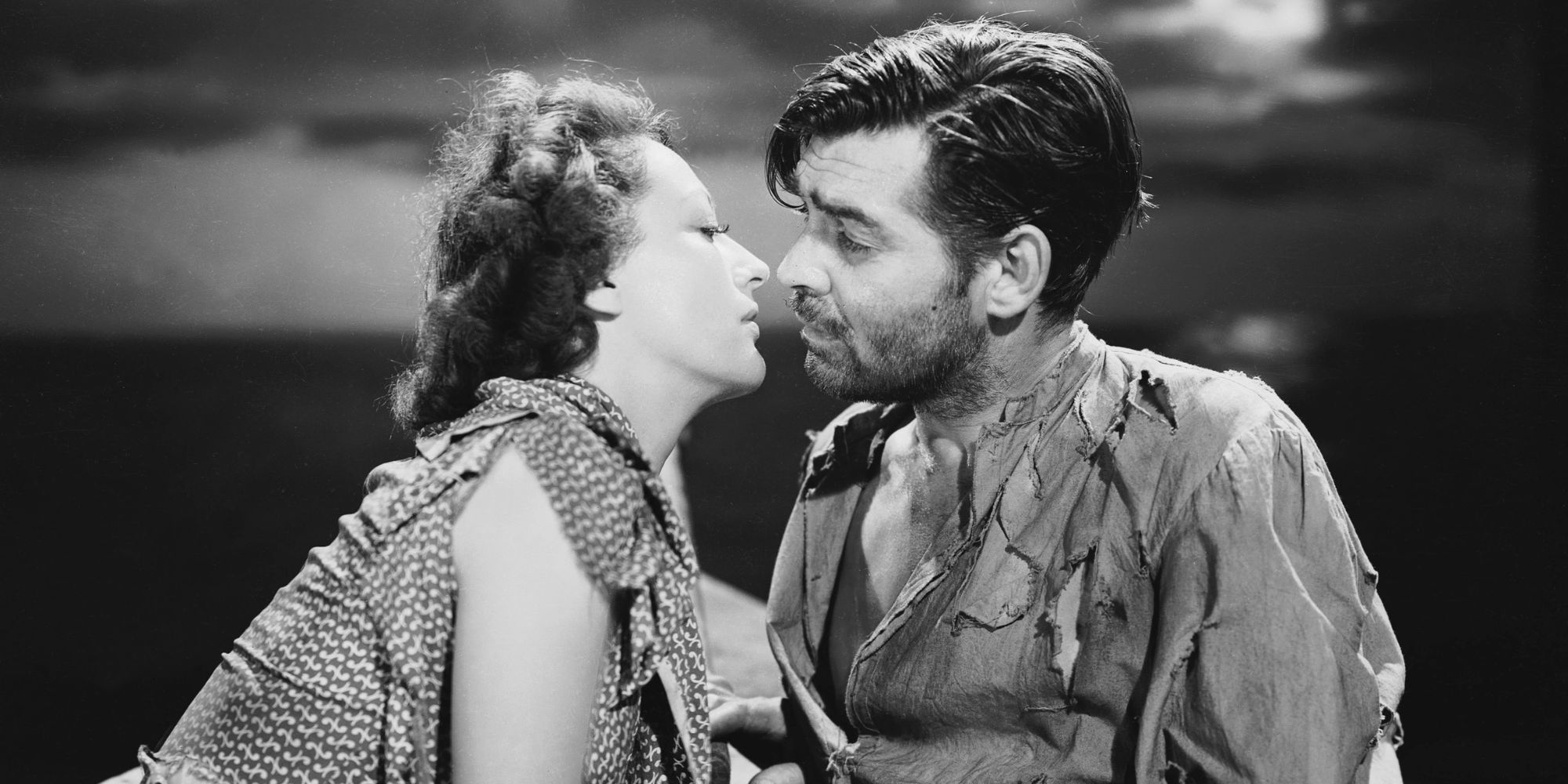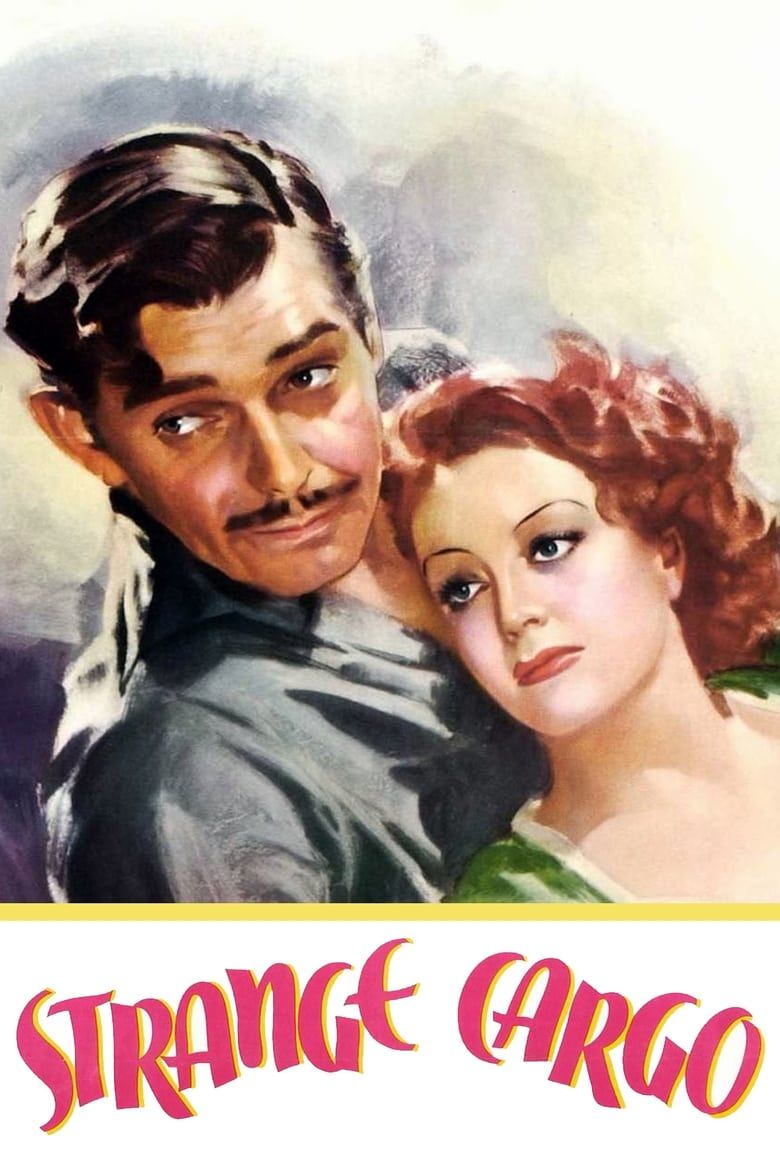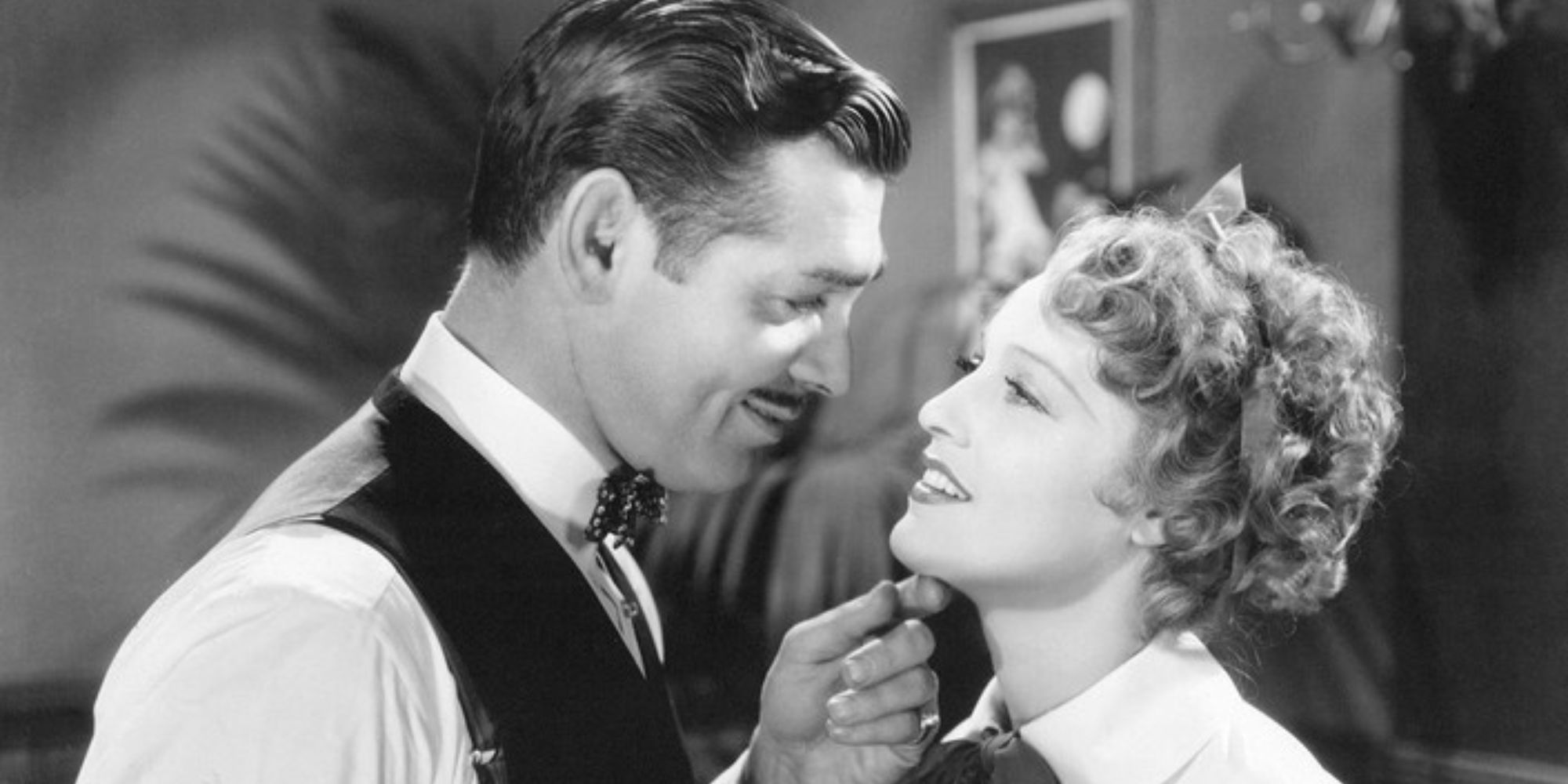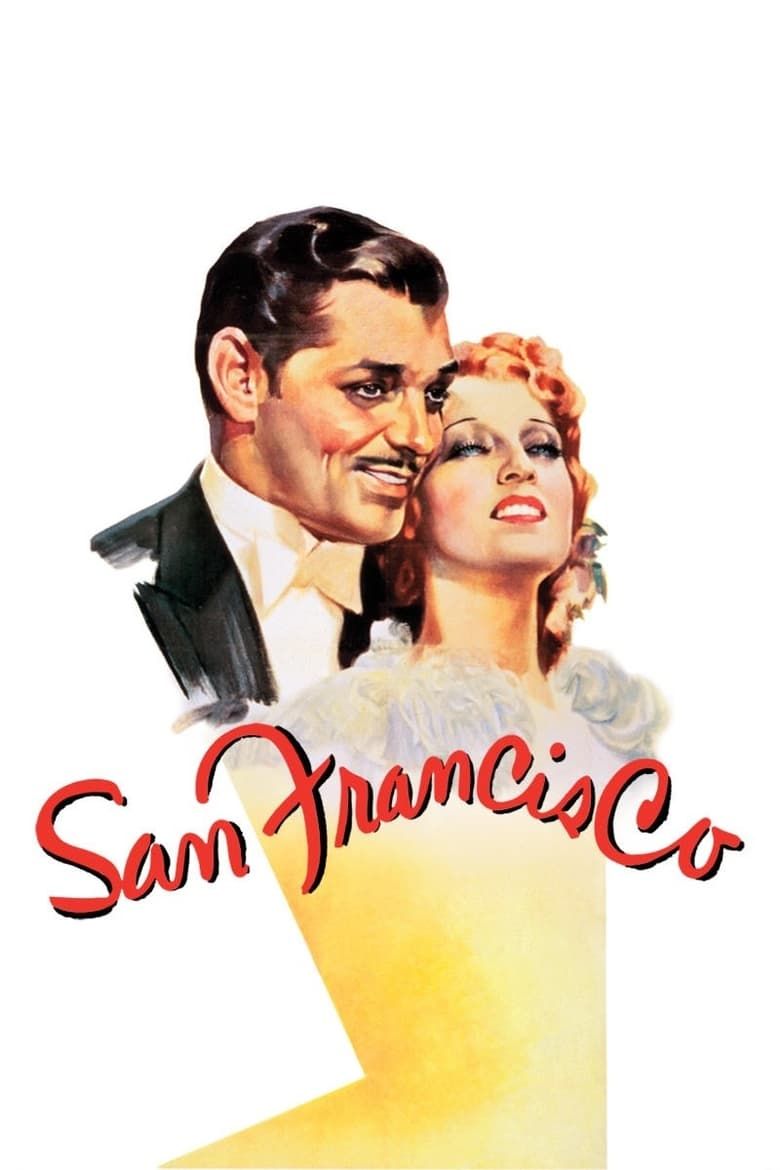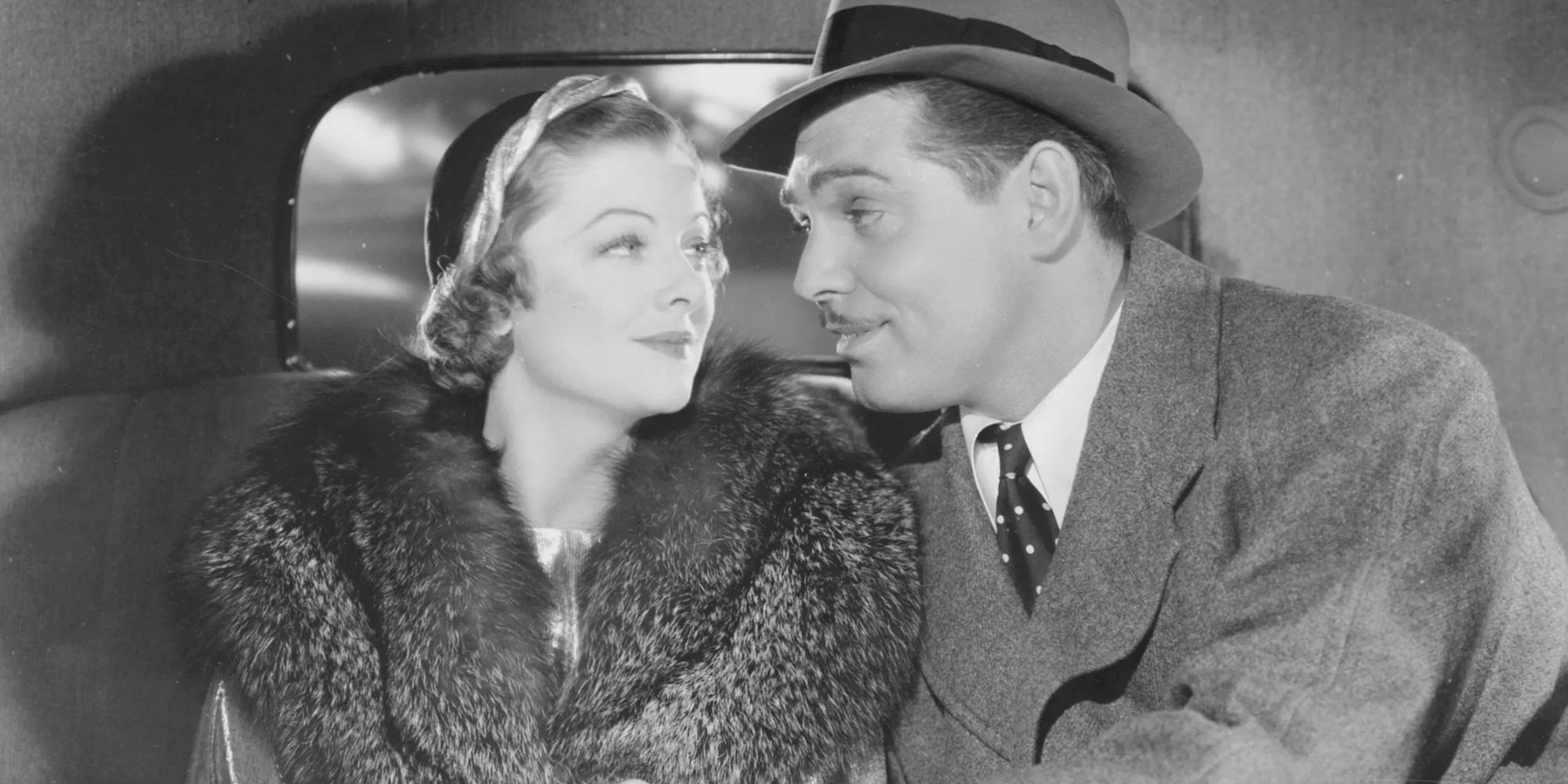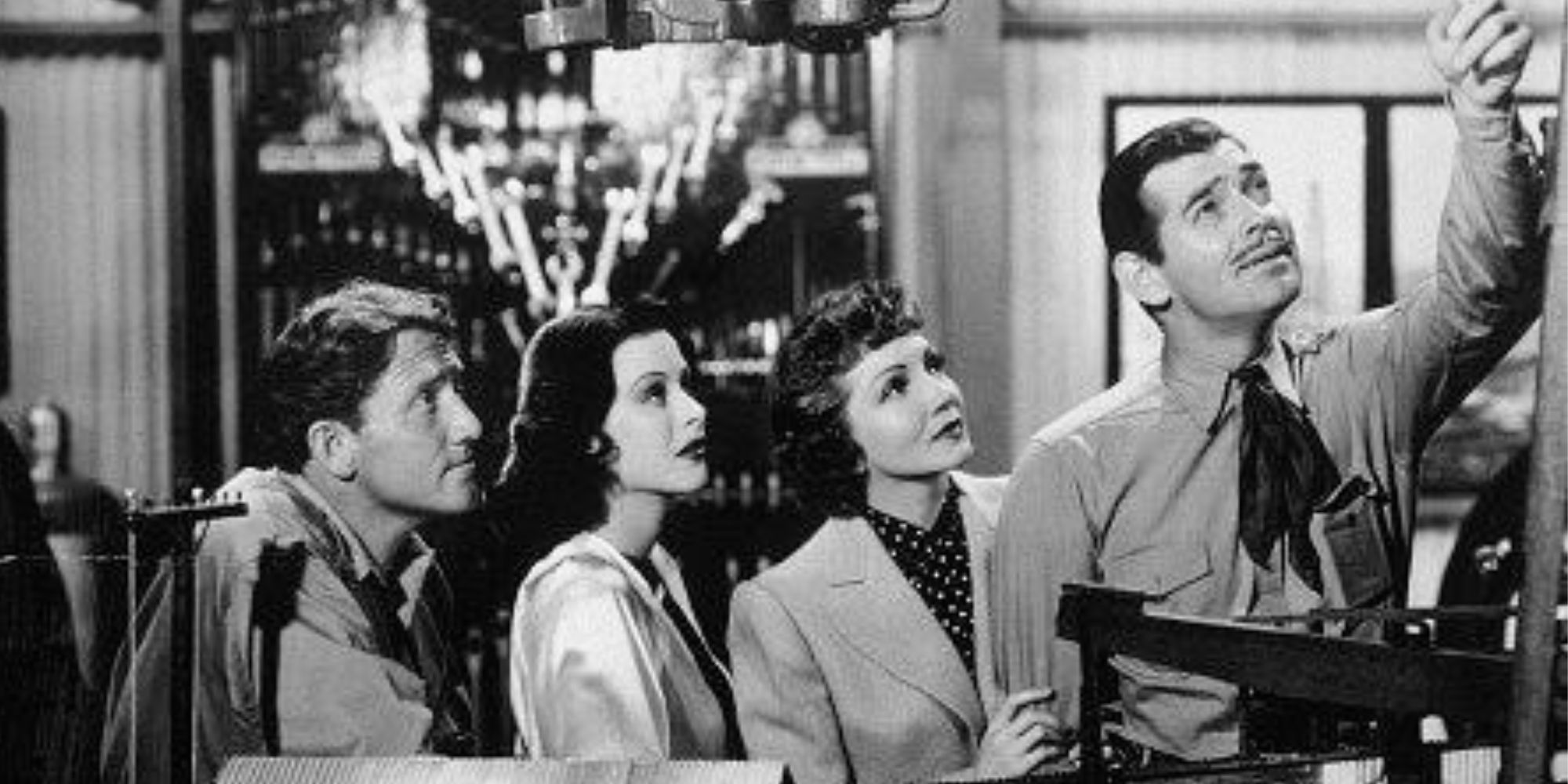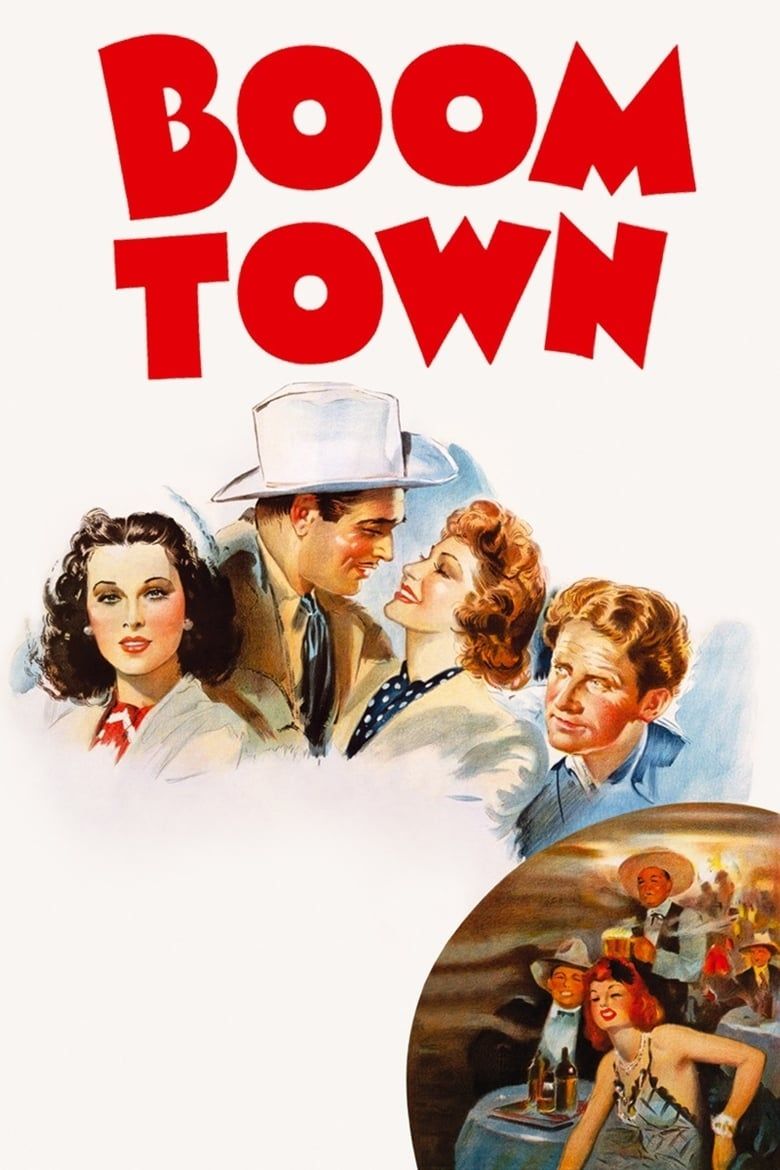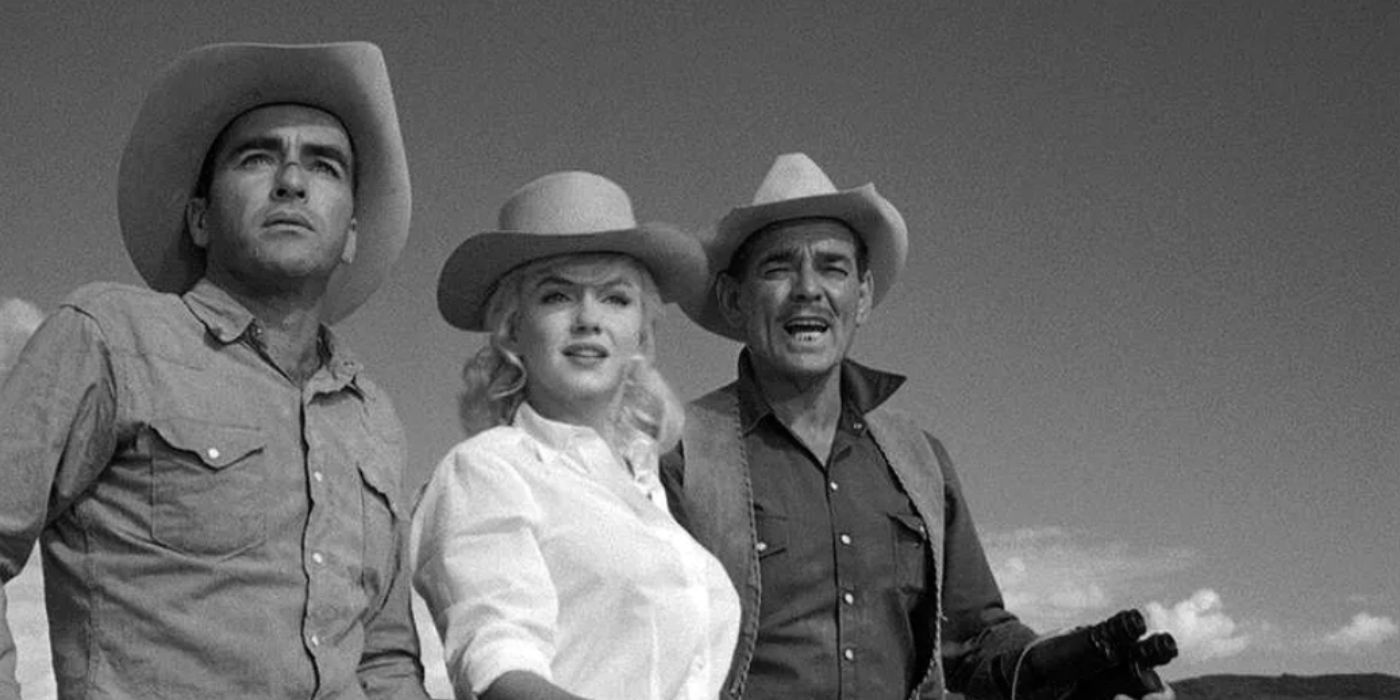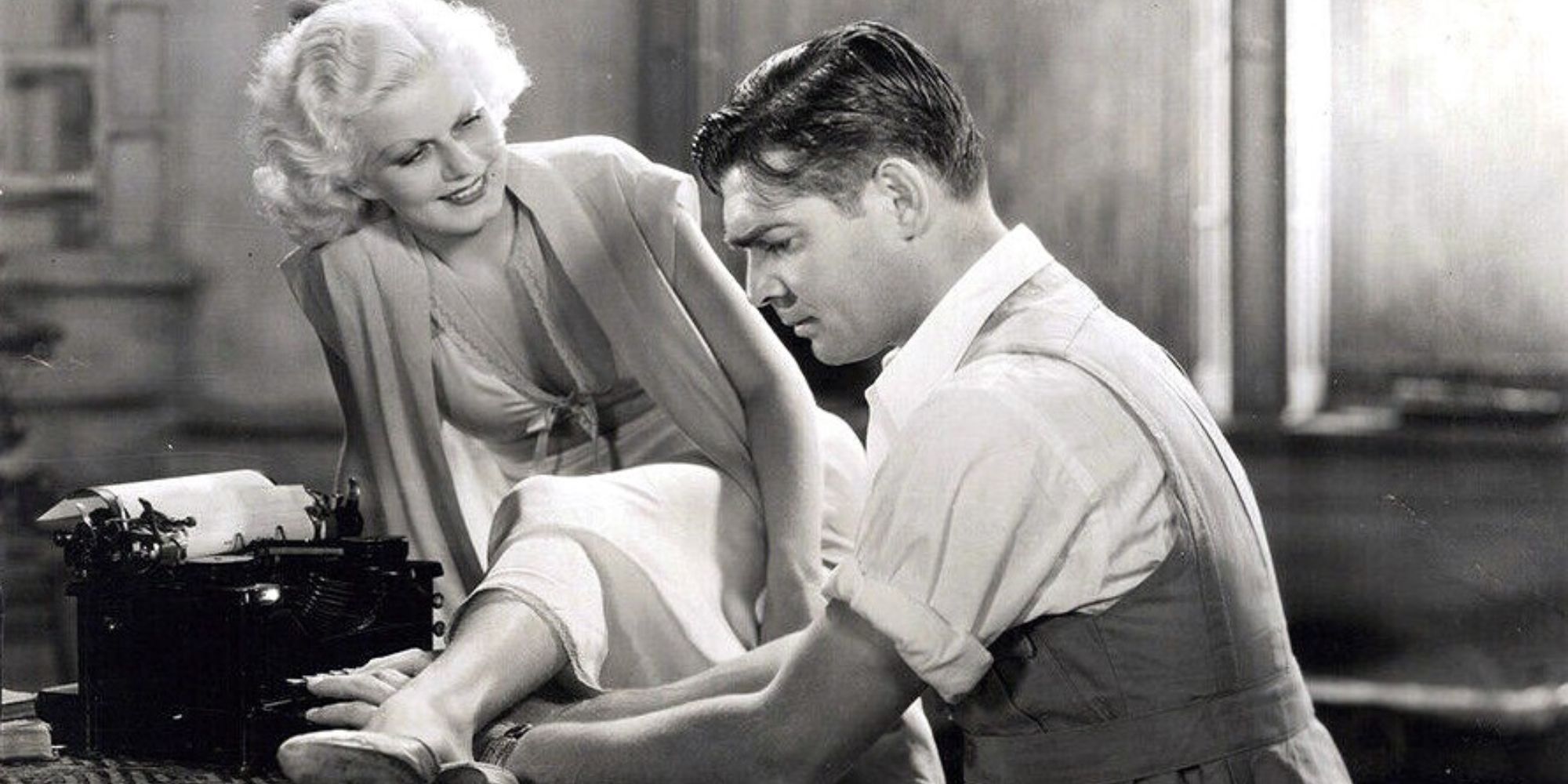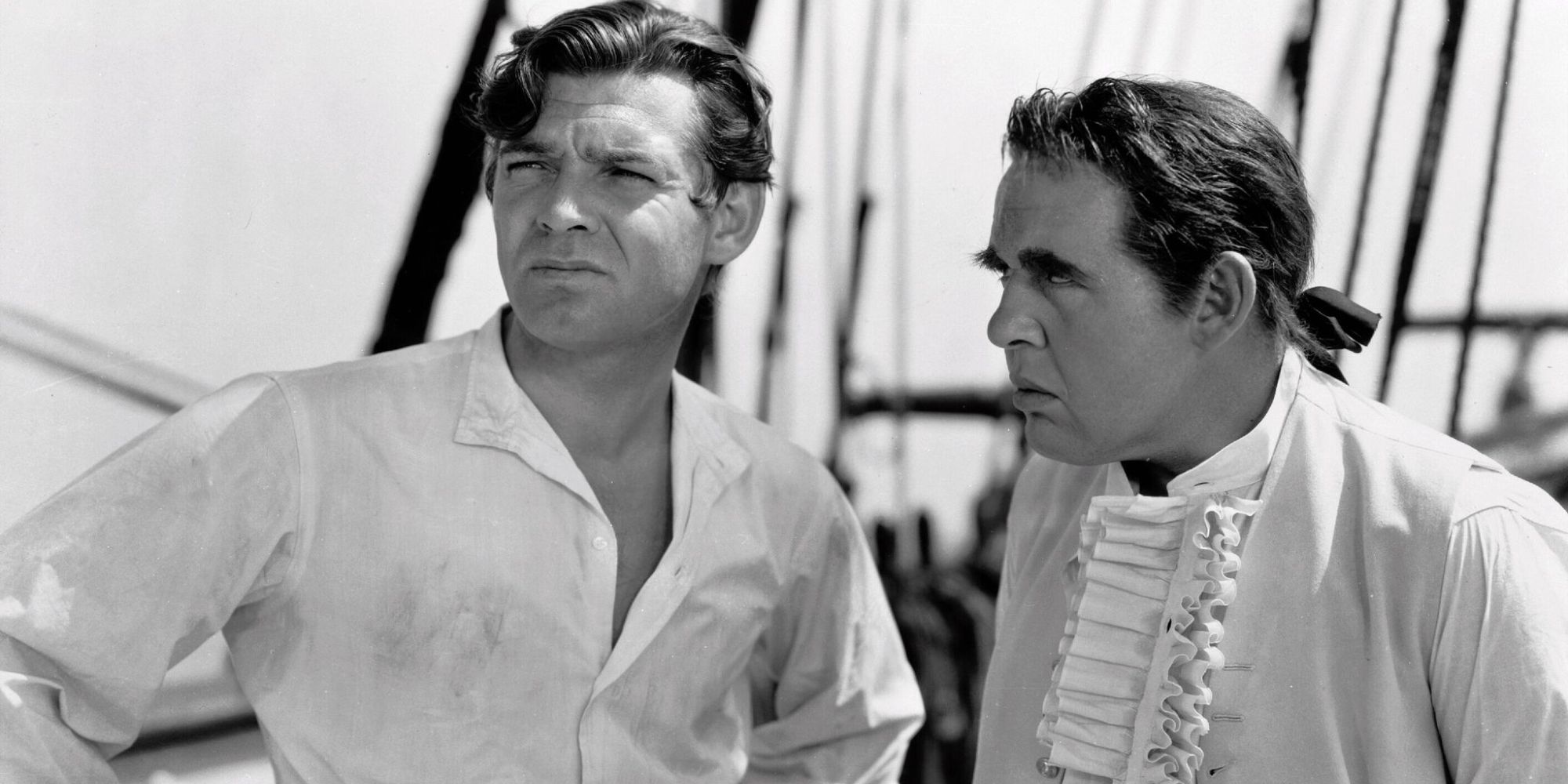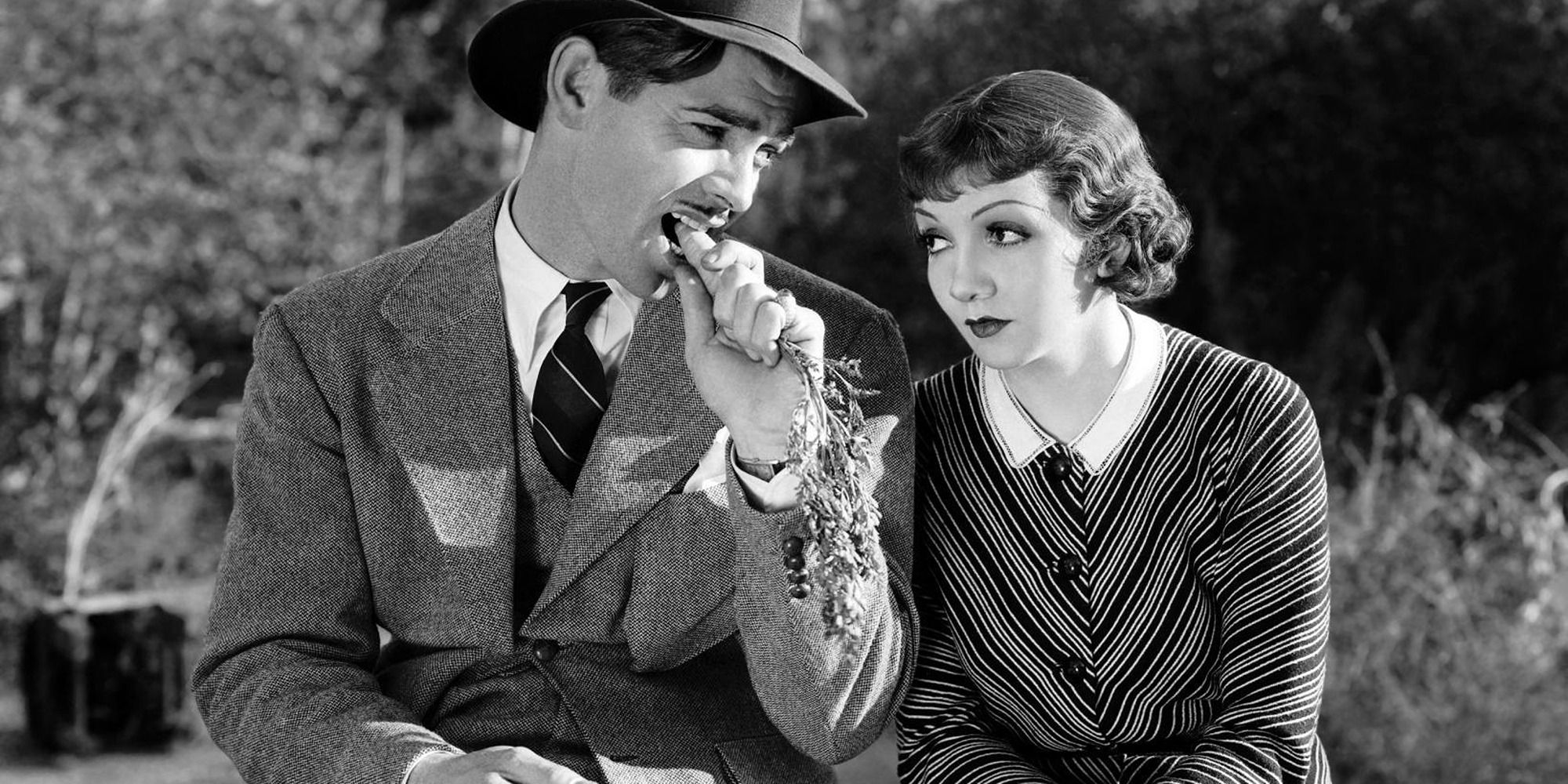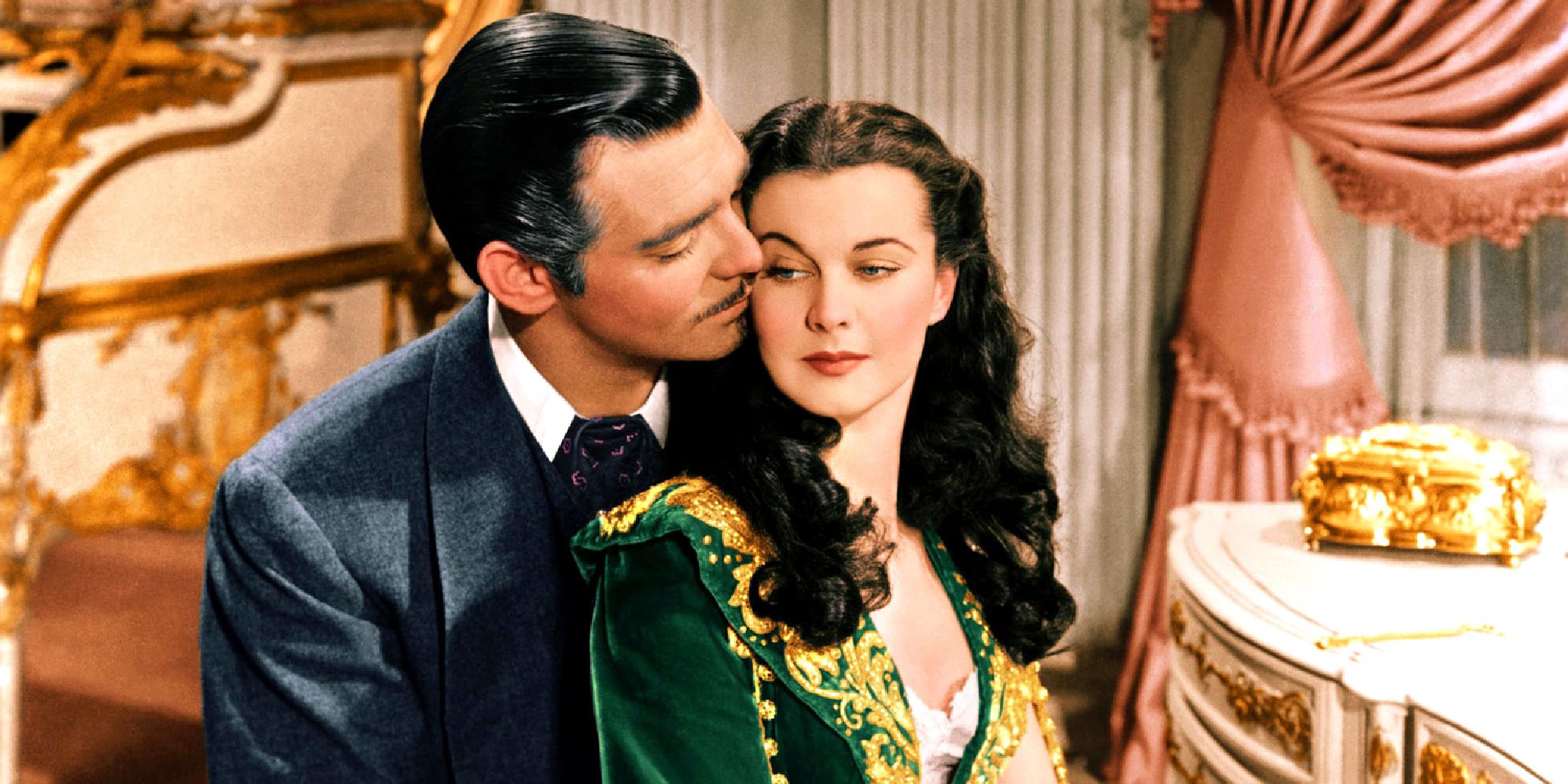10 Essential Clark Gable Movies, Ranked

Clark Gable, also known as the King of Hollywood, is regarded as one of the most prolific stars of Hollywood’s Golden Age, gaining universal fame for classics such as It Happened One Night, Gone With the Wind, and Mutiny on the Bounty. Born in Cadiz, Ohio, Gable worked in various traveling acts and appeared in talent shows before moving to Hollywood in 1924, where he found minor success in silent films as well as on stage. By 1931, Gable had signed with MGM Studios and was cast alongside established female stars such as Joan Crawford, Jean Harlow, and Myrna Loy.
Gable earned his breakthrough role in Frank Capra‘s classic screwball comedy, It Happened One Night, which catapulted the actor to infinite heights of stardom, earned him an Oscar, and turned him into a major box office draw. With a career spanning over three decades, Gable starred in an abundance of classic films, including Red Dust, Boom Town, and The Misfits, which rank as not only some of the King’s most essential films but also some of the greatest films in cinema history.
10
‘Strange Cargo’ (1940)
Directed by Frank Borzage
Gable stars in the romantic drama Strange Cargo as André Verne, a prisoner on Devil’s Island who, along with several others, escapes confinement and is tasked with finding a way off the island. Along the way, Verne rescues a young woman, Julie (Joan Crawford), who initially only agrees to go with Verne and the motley crew because she also wants off the island. Eventually, she and Verne realize the sparks flying between them.
Strange Cargo marked the final film starring Gable and Crawford, who were a frequent on-screen pair, starring in a total of eight films together and being highly regarded for their natural chemistry and sexual intensity that made them a silver-screen sensation. The movie is based on the 1936 novel Not Too Narrow, Not Too Deep by Richard Sale and features Gable as a devilish cad with a heart of gold who adds a few quips and humorous one-liners that lighten the intense backdrop of the film.
9
‘San Francisco’ (1936)
Directed by W.S. Van Dyke and D.W. Griffith
In the musical disaster film San Francisco, Gable stars as a charming nightclub owner, Blackie Norton, who hires a down-on-her-luck singer, Mary Blake (Jeanette MacDonald), to perform at his club, becoming the establishment’s main attraction. Blackie and Mary eventually develop a romantic relationship, but their bliss is interrupted by a real-estate tycoon (Jack Holt) who tries to convince Mary to leave Blackie’s club.
Gable gives a marvelous performance in San Francisco alongside MacDonald, whose musical numbers are the main attraction. Even though MacDonald is the vocal force of the film, Gable equips his character with his signature man’s man persona, topped off with a sense of edgy sophistication and charm that still makes him an alluring character. San Francisco was both a commercial and critical success and received five Academy Award nominations, including Best Director and Best Actor for Spencer Tracy, and went on to win for Best Sound Recording.
8
‘Manhattan Melodrama’ (1934)
Directed by W.S. Van Dyke and George Cukor
Manhattan Melodrama is a pre-Code classic crime movie starring Gable as a casino owner and criminal, Edward J. “Blackie” Gallagher. As a child, Gallagher was orphaned with another boy, Jim Wade (William Powell), and raised together by their guardian, remaining thick as thieves. Despite Jim becoming a successful district attorney, he and Blackie remain close friends, but when Jim decides he wants to run for governor, his connection to Blackie threatens to destroy his chances of victory.
Manhattan Melodrama was an unexpected hit that not only propelled Gable to become one of MGM’s most popular male leads but also revitalized Myrna Loy and William Powell’s careers. At the time of the film’s release, notorious criminal John Dillinger was still on the run, but the authorities eventually tracked him down in Chicago, where he was killed leaving a theater after a screening of Manhattan Melodrama. Not only did Manhattan Melodrama lure Dillinger out to his brutal death, but the infamous event also captured the public’s curiosity and imagination, elevating the film’s overall success and its bittersweet legacy.

Manhattan Melodrama
- Release Date
-
May 4, 1934
- Runtime
-
93 minutes
- Director
-
W.S. Van Dyke
7
‘Boom Town’ (1940)
Directed by Jack Conway
Gable and Spencer Tracy star as oil wildcatters, “Big John” McMasters and “Square John” Sand, who drill in fields and property throughout Texas where there are no known sources of oil. When the two team up with a local owner of drilling equipment (Frank Morgan), they eventually strike black gold. However, McMasters’ and Sand’s partnership is threatened by the ever-changing oil industry, Southern politics, and winning the affection of the lovely Elizabeth Betsy Bartlett (Claudette Colbert).
The classic Western adventure Boom Town was a monumental success. While some critics felt the plot was a bit thin and repetitive at times, the performances by Gable and the all-star cast make up for any minor flaws, each conveying a perfect blend of grit, humor, and romance. While the entire cast is stellar, Gable and Tracy are fantastic together, showcasing their genuine lifelong friendship with a classic buddy Western dynamic, making Boom Town an essential Gable classic.
6
‘Wife vs. Secretary’ (1936)
Directed by Clarence Leon Brown
Gable stars as a magazine publisher, Van Stanhope, who has just celebrated his third wedding anniversary with his wife, Linda (Myrna Loy). Despite being happily married, Linda begins to suspect something is going on between her husband and his young, attractive secretary, Helen (Jean Harlow). Unbeknownst to Linda, Helen is actually helping Van with a top-secret business venture, but their secrecy leads the young wife to almost ruin the plan as well as her marriage.
Wife vs. Secretary is a romantic comedy and drama that also stars James Stewart in one of his first memorable movie roles. Gable’s performance is humorous and elegant, effectively showcasing his already-established dynamic with his two frequent female co-stars, Loy and Harlow. The movie turned a decent profit and earned overall positive reviews, with the majority of critics noting it as a delightful effort effortlessly carried by an outstanding cast of Hollywood’s finest.
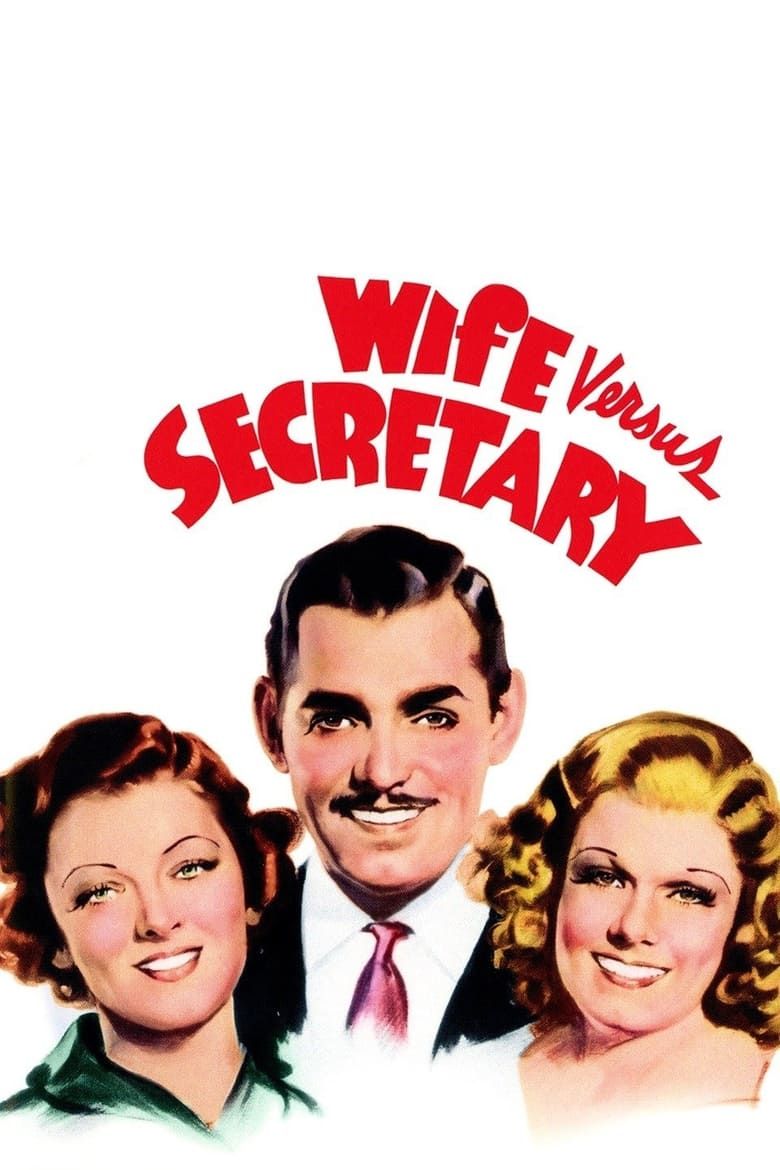
Wife vs. Secretary
- Release Date
-
February 28, 1936
- Runtime
-
88 minutes
- Director
-
Clarence Brown
5
‘The Misfits’ (1961)
Directed by John Huston
In Reno, Nevada, Roslyn Tabor (Marilyn Monroe) has recently filed for divorce from her absent husband when she meets two aging cowboys, Gay Langland (Gable) and Guido (Eli Wallach). On a whim, she decides to move into Guido’s partially finished house in the desert with them. While sparks begin to fly between Gay and Roslyn, the trio is joined by an ex-rodeo rider, Perce Howland (Montgomery Clift), and decides to go into business together wrangling wild horses.
John Huston‘s contemporary Western The Misfits marked the final film for Gable, who died three months before the film was released, which, ironically, was on what would have been the King’s 60th birthday. Despite being a commercial failure, critics still commended The Misfits for its emotionally driven plot, Huston’s artistic direction, and epic performances. Gable gives one of his most vulnerable and passionate performances, showcasing his underrated range and versatility as an actor.
4
‘Red Dust’ (1932)
Directed by Victor Fleming
In Vietnam, a woman on the run, Vantine (Jean Harlow), seeks refuge at a rubber plantation owned by Dennis Carson (Gable). The two engage in a steamy affair, but when Gary Willis (Gene Raymond) and his wife, Barbara (Mary Astor), arrive, Dennis sets his sights on Barbara, leading Vantine to leave. While Dennis pursues Barbara, he soon has a change of heart, and when Vantine returns, Dennis must choose between the two women.
Red Dust marked the second of six collaborations between Gable and Harlow, and is easily one of the duo’s most iconic films. The movie initially received lukewarm reviews from critics who weren’t convinced by Astor’s performance but credited Gable as the actress’ saving grace. Overall, the main attraction is, without question, Harlow and Gable, who are absolutely mesmerizing together, oozing with sexual tension and a wild attraction, which solidifies Red Dust as one of Gable’s finest films.
3
‘Mutiny on the Bounty’ (1935)
Directed by Frank Lloyd
Mutiny on the Bounty is a historical adventure drama set on board the Royal HMS Bounty, which is headed towards Tahiti and is captained by a cruel man, William Bligh (Charles Laughton). When the crew grows tired of the captain’s abusive treatment, his first mate, Fletcher Christian (Gable), leads a mutiny against Bligh, ultimately removing him from his post. While Fletcher and the crew continue their journey as scheduled, Bligh becomes hellbent on exacting his revenge against his first mate.
Despite various historical inaccuracies, Mutiny on the Bounty was a major hit at the box office, becoming one of MGM’s most profitable films of the decade. While Laughton is spectacular, Gable holds his own against the seasoned star, delivering an enticingly wild and enthralling performance that is among many of his fans’ favorites. Gable, Laughton, and Franchot Tone all received Oscar nominations for Best Actor, and even though none of them won, it did lead to the introduction of the Best Supporting Actor and Actress Oscar categories.
2
‘It Happened One Night’ (1934)
Directed by Frank Capra
Gable stars in one of the greatest screwball comedies of all time, It Happened One Night, as reporter Peter Warne, who recognizes heiress Ellie Andrews (Claudette Colbert) as she is trying to make her way back to her new husband after her disapproving father tried shipping her off on the family yacht. Peter agrees to help Ellie return to her husband, but only if she agrees to give him an exclusive story about her recent marriage.
It Happened One Night is an iconic romantic comedy that marked a major milestone for Gable and also made Oscar history by becoming the first movie to ever win all five major Academy Awards. Gable delivers an engaging and amusing performance that demonstrates why his authentic charisma and suave demeanor captured the hearts of millions. Even though Gable was already an established star at the time, It Happened One Night made him a worldwide sensation and also earned him his one and only Academy Award for Best Actor.
1
‘Gone With the Wind’ (1939)
Directed by Victor Fleming
The epic Civil War drama, Gone With the Wind, follows a headstrong Southern Belle, Scarlett O’Hara (Vivien Leigh), whose comfortable and pristine world is shattered by the American Civil War, forcing her to fend for herself and others around her who are lucky enough to survive. As Scarlet fights to stay alive and rebuild her home, she is hopelessly entangled in a love triangle with the gentle Ashley Wilkes (Leslie Howard) and the witty and ruthless Captain Rhett Butler (Gable).
While Gable starred in countless classic films, he is universally recognized for his performance as Rhett Butler in David O. Selznick‘s Gone With the Wind. Known for delivering some of the film’s best quotes, Gable delivers a tour de force performance as a sharp-tongued gentleman, providing his character with an undeniable allure and rogue masculinity that can be seen as both cynical and charming. The movie was a massive success, earning a record of thirteen Oscar nominations and was the first color film to win the Oscar for Best Picture. Even though Gable was robbed of an Oscar win, Gone With the Wind wouldn’t have been half as successful without the actor’s infamous performance and is by far the King of Hollywood’s most essential film.

